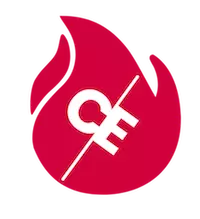How is a Crypto Coin Created?
How is a crypto coin actually made?
Crypto tokens are a type of digital asset that can be used to represent a variety of different things, including currencies, assets, and even concepts. These tokens are often built on top of blockchain technology, which allows them to be securely traded and tracked on a decentralized network.
But how does a crypto token actually get created?
Developing the underlying technology
The process of creating a crypto token, also known as "minting" a token, typically involves a few key steps. The first step is to develop the token's underlying technology. This typically involves creating a smart contract, which is a program that runs on a blockchain and defines the rules and characteristics of the token.
The smart contract specifies things like the token's name, symbol, and total supply, as well as any special features or functionality it may have. This can include things like the ability to transfer tokens between users, to vote on decisions that affect the token, or to earn rewards for holding the token.
Once the smart contract is developed, it must be carefully tested to ensure that it functions as intended and is secure from potential attacks.
Issuing the initial supply of tokens
Once the smart contract is developed and tested, the initial supply of tokens can be issued and distributed to the people or entities that will be responsible for managing and governing the token. This is often done through a process known as an initial coin offering (ICO), in which investors can purchase the tokens in exchange for a cryptocurrency like Bitcoin or Ethereum.
During the ICO, the token's creators will typically set a target amount of funds that they hope to raise, as well as a deadline for the offering. If the target is reached before the deadline, the ICO is considered successful and the tokens will be issued to the investors. If the target is not reached, the funds may be returned to the investors and the token may not be issued.
Listing the token on exchanges
Once the initial supply of tokens has been issued, the next step is to list the token on cryptocurrency exchanges. This allows users to buy and sell the tokens on the open market, and can also help to increase the token's visibility and liquidity.
To list a token on an exchange, the token's creators must typically apply to the exchange and provide detailed information about the token and its underlying technology. The exchange will then review the application and decide whether to list the token.
Once the token is listed on an exchange, users will be able to buy and sell it using the exchange's platform. This can help to increase the token's value and popularity, as well as provide a way for users to easily convert the token into other cryptocurrencies or fiat currencies like dollars or euros.
Ongoing management and development
After the initial launch, the token's creators and managers will continue to play a role in its ongoing development and management. This can include things like implementing new features, responding to user feedback, and making decisions about the direction of the token and its underlying technology.
The success of a crypto token often depends on the continued engagement and support of its creators and users. By staying involved and responsive, the token's creators can help to ensure that the token remains relevant and valuable to its users.
Overall, creating a crypto token is a complex process that involves a number of different steps and stakeholders. However, the end result can be a powerful and versatile digital asset that can be used to represent a wide range of different ideas and concepts.
